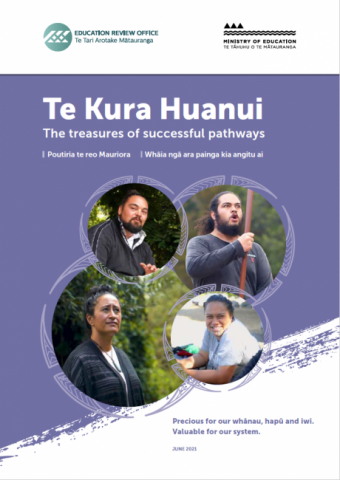New Zealand’s first multimedia report on Māori-medium education was launched today by Associate Education Minister Kelvin Davis in a moving ceremony with Māori leaders, kaiako, graduates and whānau at Parliament.
The national research report Te Kura Huanui: The treasures of successful pathways, published in te reo Māori and English, includes links to five short documentaries which provide rare insight and a deep dive into the common conditions for success in Māori-medium education.
The acknowledgement of Māori-medium successes was deemed as “long overdue” by Minister Davis, who applauded the sector’s ability to deliver exceptional outcomes for Māori learners despite facing many challenges over the decades.
“We were very fortunate to have some of the early founders of the Māori-medium movement at the launch of Te Kura Huanui. Really this day was for them, for those who fought with grit and determination to make immersion education possible for our tamariki,” he said.
While this report celebrates the past, the future of Māori-medium education is also looking bright following a $150 million investment in this year’s Budget, the Associate Minister said.
This included funding to build and expand schools delivering Māori-medium education and improving pay parity for kaiako in kōhanga reo.
Commissioned by the Ministry of Education, the qualitive research was carried out by the Education Review Office in partnership with Māori medium peak bodies: Te Kōhanga Reo, Te Runanga Nui o Ngā Kura Kaupapa Māori, Ngā Kura ā Iwi and numerous Māori-medium sites across Aotearoa. Committed to a strong Kaupapa Māori approach to working together, the research was conducted through a series of video interviews by Māori, with Māori, for Māori and in te reo Māori where possible.
As well as outlining the legislative and historical events which served as key milestones and drivers for Māori-medium education, Te Kura Huanui details the five common conditions that are vital for delivering Māori-medium education:
- Mana Māori Motuhake: Being Māori;
- Tikanga Māori;
- Whanaungatanga: Relationships and connectedness;
- Ako: Teaching and Learning;
- Kanohi Whakakite: Leaders as visionaries.
“We share the vision of an inclusive education system where every child feels a sense of belonging, where their identity, language and culture are celebrated, where they are engaged – and making real progress. Educators know we must take a broader view of success, and put children’s wellbeing is at the heart of our efforts,” Associate Education Minister, Jan Tinetti said.
“I know that releasing this report will be a proud moment for everyone who has contributed to it – the tumuaki, kaiako, raukura and manu pīrere, Te Uepū ā-Motu and Te Pou Mataaho, and all the whānau. I will join them in remembering it for a long time to come.”
The research is considered a “taonga” for the education sector, capturing best practice and highlighting the importance of whānau, hapū and iwi as experts and key decision-makers in the learning journey.
The work also provides a valuable addition to New Zealand’s archive on Māori-medium education, as told by early founders, leaders, Kaiako, graduates and whānau.
Read the full report in te reo Māori
Read the full report in English



